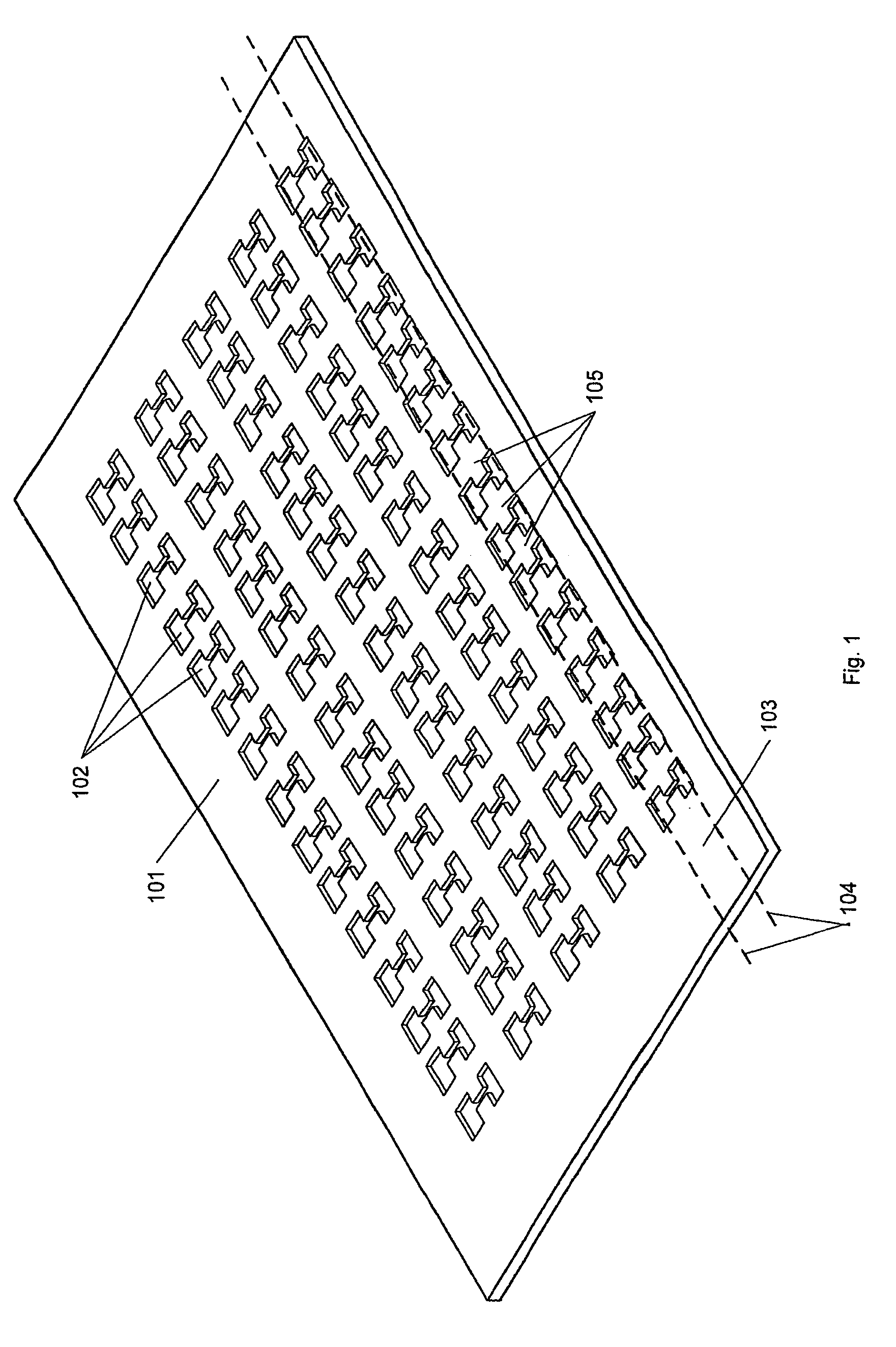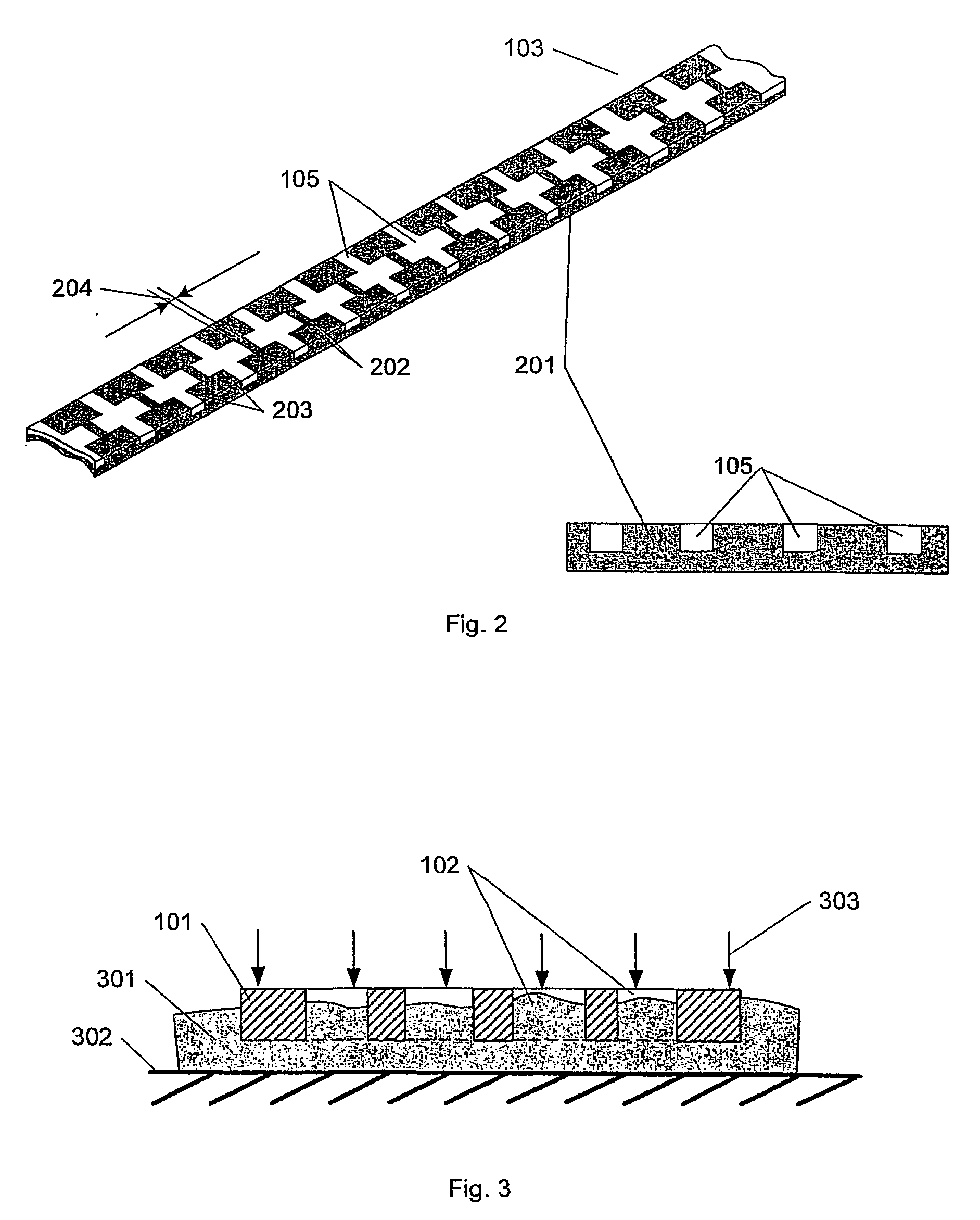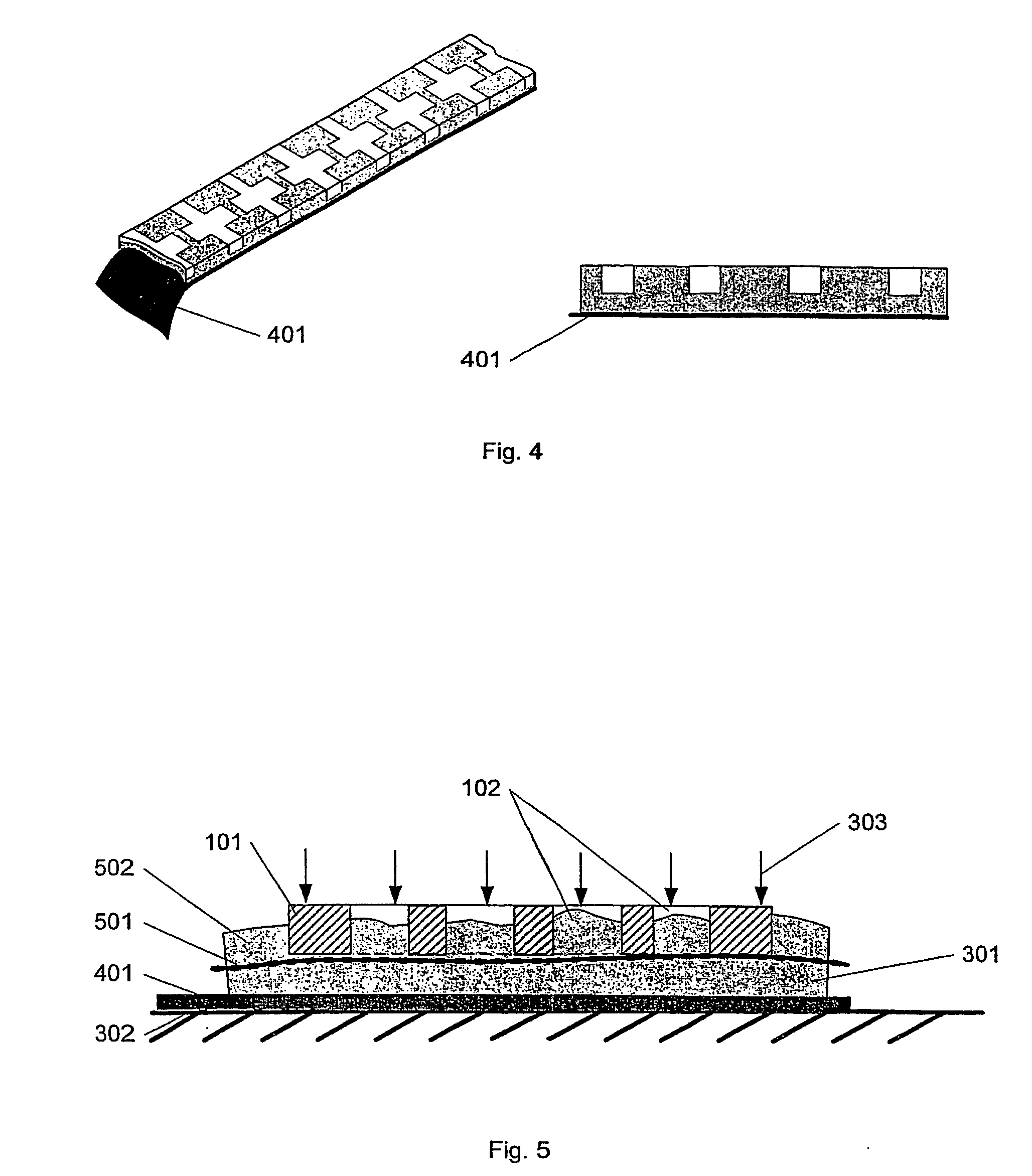Lightning Diverter for Conducting a Lightning-Induced Electrical Current and a Method of Producing the Same
a technology of diverter and electrical current, which is applied in the installation of lighting conductors, sustainable manufacturing/processing, protective material radiating elements, etc., can solve the problems of increased risk of being struck by lightning, and service and maintenance becoming rather expensive and complex, and achieving low weight and not prone to cracking
- Summary
- Abstract
- Description
- Claims
- Application Information
AI Technical Summary
Benefits of technology
Problems solved by technology
Method used
Image
Examples
Embodiment Construction
[0035]FIG. 1 shows a plate 101 used in the production of a lightning diverter as described in the following. The plate 101 is made of a material with good electrically conducting properties, preferably a metal such as stainless steel, copper, brass or the like. A number of holes 102 is cut into the plate 101 e.g. by laser cutting or punching. The holes 102 are applied in a pattern designed so that the plate can be divided into one or more strips 103 as shown by the hatched lines 104 in the figures where the strip will then consist of a number of segments 105 all spaced apart and not connected. The strip 103 does not necessarily have to be straight, but can be in any desired curved shape suitable for its purpose. In the embodiment of the plate as shown in FIG. 1 the resulting diverter will be a strip with a number of cross-shaped segments. Different patterns are shown in FIGS. 9 and 10.
[0036]Before the plate 101 is divided, the holes are filled with an electrically non-conductive mat...
PUM
| Property | Measurement | Unit |
|---|---|---|
| sizes | aaaaa | aaaaa |
| sizes | aaaaa | aaaaa |
| electrically conductive | aaaaa | aaaaa |
Abstract
Description
Claims
Application Information
 Login to View More
Login to View More - R&D
- Intellectual Property
- Life Sciences
- Materials
- Tech Scout
- Unparalleled Data Quality
- Higher Quality Content
- 60% Fewer Hallucinations
Browse by: Latest US Patents, China's latest patents, Technical Efficacy Thesaurus, Application Domain, Technology Topic, Popular Technical Reports.
© 2025 PatSnap. All rights reserved.Legal|Privacy policy|Modern Slavery Act Transparency Statement|Sitemap|About US| Contact US: help@patsnap.com



